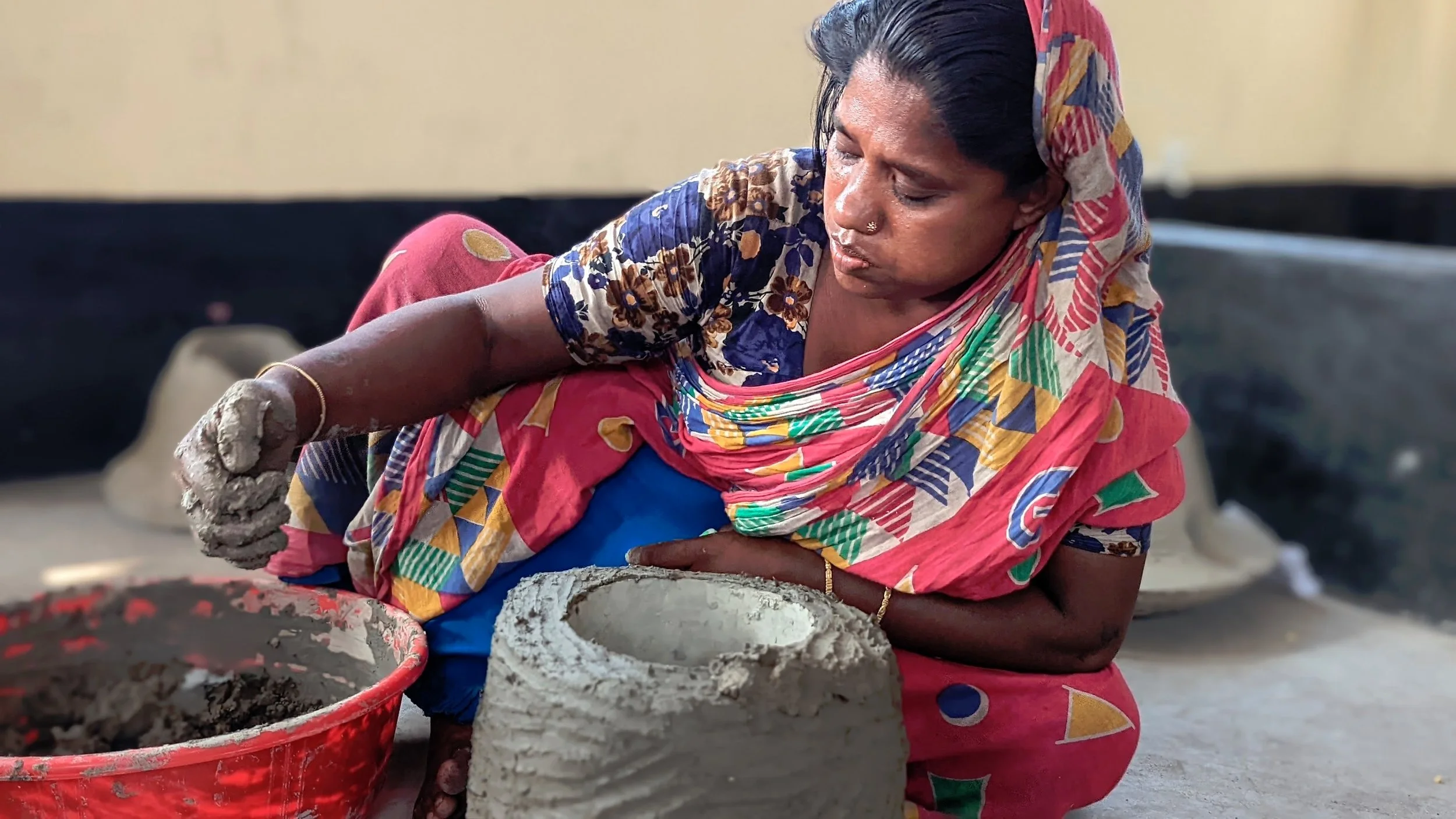Running with DMC pt. 2
Learnings from field testing of Prakti Air in Kolkata, India, May 26th, 2022. By Leo Taranta-Slack (Product Development Engineer at Prakti)
For me, walking into the slum at Dakshineswar Metro Colony (DMC) was like visiting an elite college for the first time. For the months leading up to my arrival there I had been running chulha (traditional Indian wood-burning stove) tests nearly every day and felt like I had a deep understanding of the thermodynamic, fluid, and combustion dynamics of wood-burning. But many of the so-called ‘slum dwellers’ in DMC have been running ‘tests,’ cooking meals on chulhas multiple times a day, all their lives. And although they do not have scientific backgrounds, their intuitive knowledge about how best to operate a wood stove surmounted mine significantly.
This trip was my first foray into clean-burning stove fieldwork as well as India in general. Luckily, I was accompanied by Mark Jacobs, a longtime Prakti devotee and volunteer who has done handfuls of similar launches and lived in India for many years. We also were supported by an incredible team of individuals from Calcutta Rescue who had local knowledge and connections in DMC.
We spent the first few days as good students might; we watched attentively, took copious notes, and asked as many questions as possible without being too annoying. It was essential for us to gauge the relative importance of multiple chulha characteristics to the local people; performance characteristics such as smoke, fuel reduction, ash, and fire safety, as well as non-performance characteristics like carrying mechanism, cleanability, and esthetics.
Learning this crucial knowledge allowed Mark and I to adjust the stove body design on the fly to tune it to local needs and preferences. Initially, we had assumed that people would be most concerned about the stove putting out slightly more ash (due to the increased temperature and the nature of forced drafts) and that the stove used less wood. However, we learned people cared MUCH more about reducing the smoke that was ruining their houses as well as their cooking experiences and improving the temperature and speed at which they could cook. Although wood reduction was still a selling point, recycled wood was exceptionally cheap and easy to find in DMC, so most people would hardly notice their decreased spending.
The design that we went with maximized stove power and efficiency as well as improved the traditional stove’s portability. The bottom part of the stove we cast out of ferro-cement in a common chulha base form. The cement base allowed us to improve the repeatability of the critical dimensions and provide a less fragile and sharp base to carry the stove on. We also created a basic form for controlling the critical internal dimensions in the mud portion of the stove while leaving the esthetic choices up to the person building it.
We consulted and hired a local craftswoman to give us input and to build the mud body of a few of the chulha. She is an absolute master of her craft and made our favorite chulhas! In the end, our hard studying paid off, and we were able to hand out nine beautiful mud-cement Prakti Air-Chulhas for use in 9 households in DMC. On my last day, I walked to each house to see if they had any questions or concerns. However, all I received was positive user feedback, glowing smiles, and comments from people who wanted to build their own.
We are surveying the opinions of these nine families over the next two months to see how their perspectives grow and bloom.






